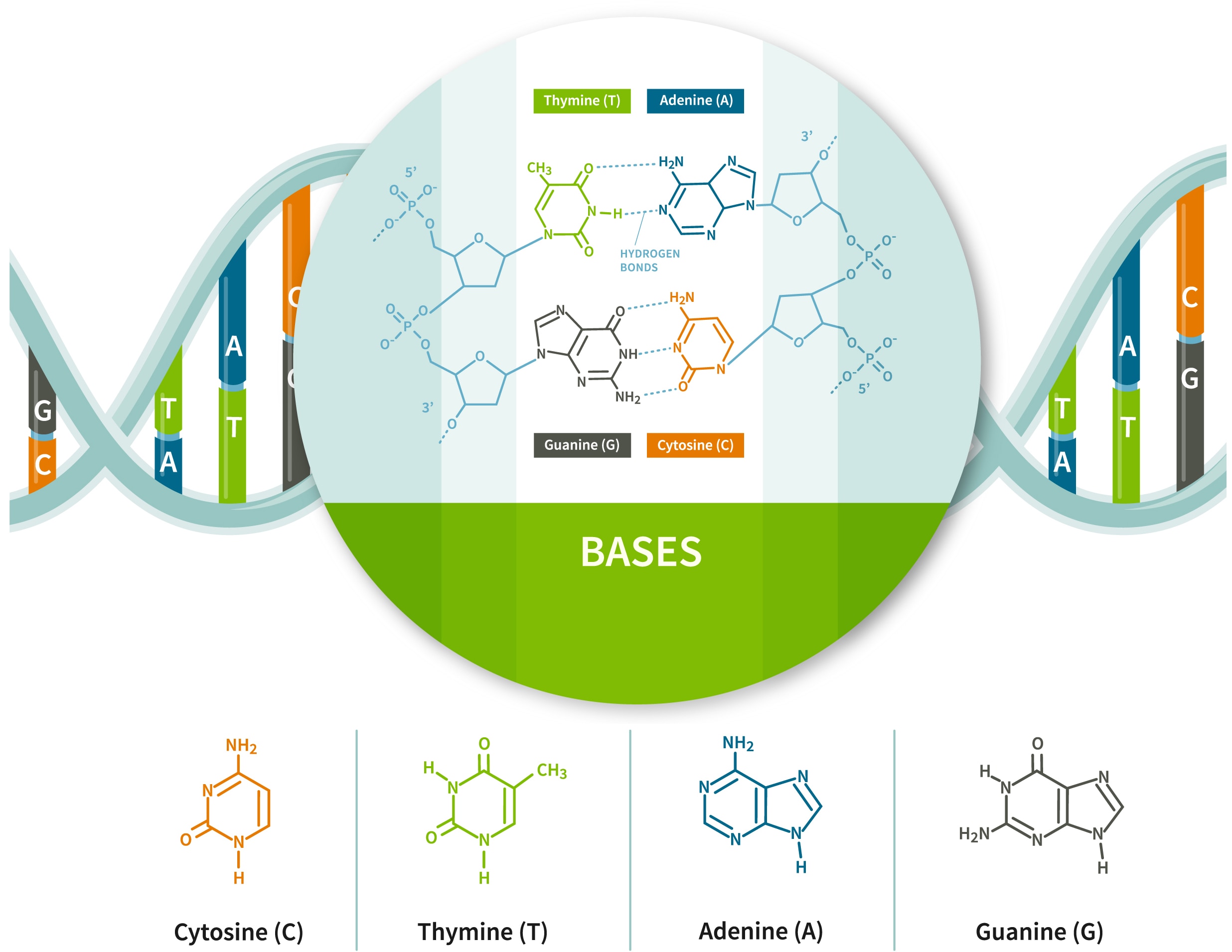DNA Nucleotides
What Are DNA Nucleotides?
Nucleotides are the basic building blocks of nucleic acids, including DNA and RNA. By connecting millions of individual nucleotides together, your cells can form long polynucleotide chains. DNA is double-stranded, whereas RNA consists of a single strand and is comprised of a much shorter chain of nucleotides.
 In nucleotides like ATP, the energy is stored in the phosphoanhydride bonds between the three phosphate groups. These bonds require energy to form, so the cells in your body can use these bonds like a battery to store extra power. When the cell wants to access that stored power, it removes a phosphate group by breaking the phosphoanhydride bonds to release the energy, through a process called hydrolysis.
In nucleotides like ATP, the energy is stored in the phosphoanhydride bonds between the three phosphate groups. These bonds require energy to form, so the cells in your body can use these bonds like a battery to store extra power. When the cell wants to access that stored power, it removes a phosphate group by breaking the phosphoanhydride bonds to release the energy, through a process called hydrolysis.
What Is the Structure of Nucleotides?
Nucleotides consist of three subunits. The first subunit is a base that contains the element nitrogen. These nitrogenous bases come in two varieties: pyrimidine derivatives, which include thymine and cytosine, and purine derivatives, which include guanine and adenine. The hydrogen bonds between these bases are what allow the two strands of DNA to bind to each other and form a double helix. There's also a fifth type of base called uracil, which is a pyrimidine derivative that's only found in RNA.
The second subunit of a nucleotide is a sugar molecule containing a ring of five carbon atoms. For DNA nucleotides, the type of sugar molecule is called deoxyribose—which is what the 'D' in DNA represents. RNA nucleotides contain a different sugar called ribose, which is why the molecule is referred to as ribonucleic acid.
If you combine a nitrogenous base with a five-carbon sugar, you get a nucleoside (with an 's'). In order to form a nucleotide (with a 't'), you need a third subunit: a phosphate group. A phosphate group consists of a phosphorus atom bonded to four oxygen atoms. When nucleotides are not attached to DNA, they can contain up to three phosphate groups. However, the number of phosphates present in one nucleotide of DNA is lower: when it's part of a DNA strand, a nucleotide contains only one phosphate group.
How Do Nucleotides in DNA Pair?
Nucleotides pair up in a very specific manner, depending on the type of nitrogenous base that they contain. Every DNA nucleotide pair will consist of one pyrimidine and one purine. Due to the chemical structures of the different bases, adenine (A) will always bind with thymine (T) and guanine (G) will bind with cytosine (C). The same is true for RNA except that A always pairs with a close relative of thymine, uracil (U)...
The link that connects the two bases is a hydrogen bond. A-T base pairs are bound together by two hydrogen bonds, while G-C base pairs are bound together by three hydrogen bonds. These base pairs form the rungs of the twisted ladder (or double helix) of DNA and contribute to the folded structure of RNA.
What Role Do DNA Nucleotides Play in DNA Sequencing?
DNA nucleotides contain four nitrogenous bases: adenine (A), thymine (T), guanine (G), and cytosine (C). These bases are represented as As, Ts, Gs, and Cs when describing a DNA sequence. The specific sequence of these four letters in your genome conveys vast amounts of information, similar to the way a series of ones and zeros can tell a computer how to run a complex program.
Scientists can determine the order of nucleotides in a DNA molecule through a process called DNA sequencing. By having your DNA sequenced, you can uncover lots of useful information about yourself, such as whether you might be predisposed to certain diseases and what geographical regions your ancestors may have come from.